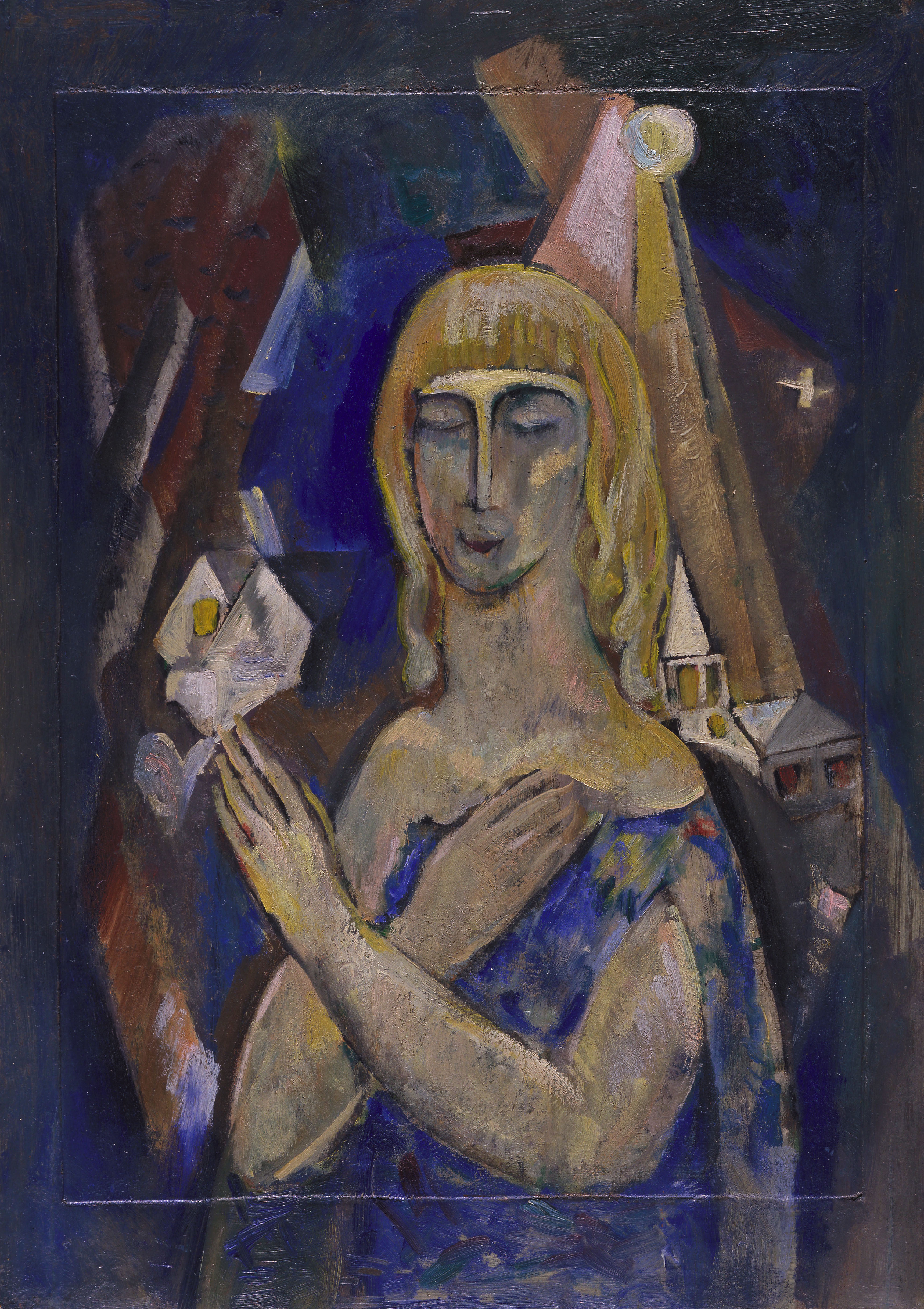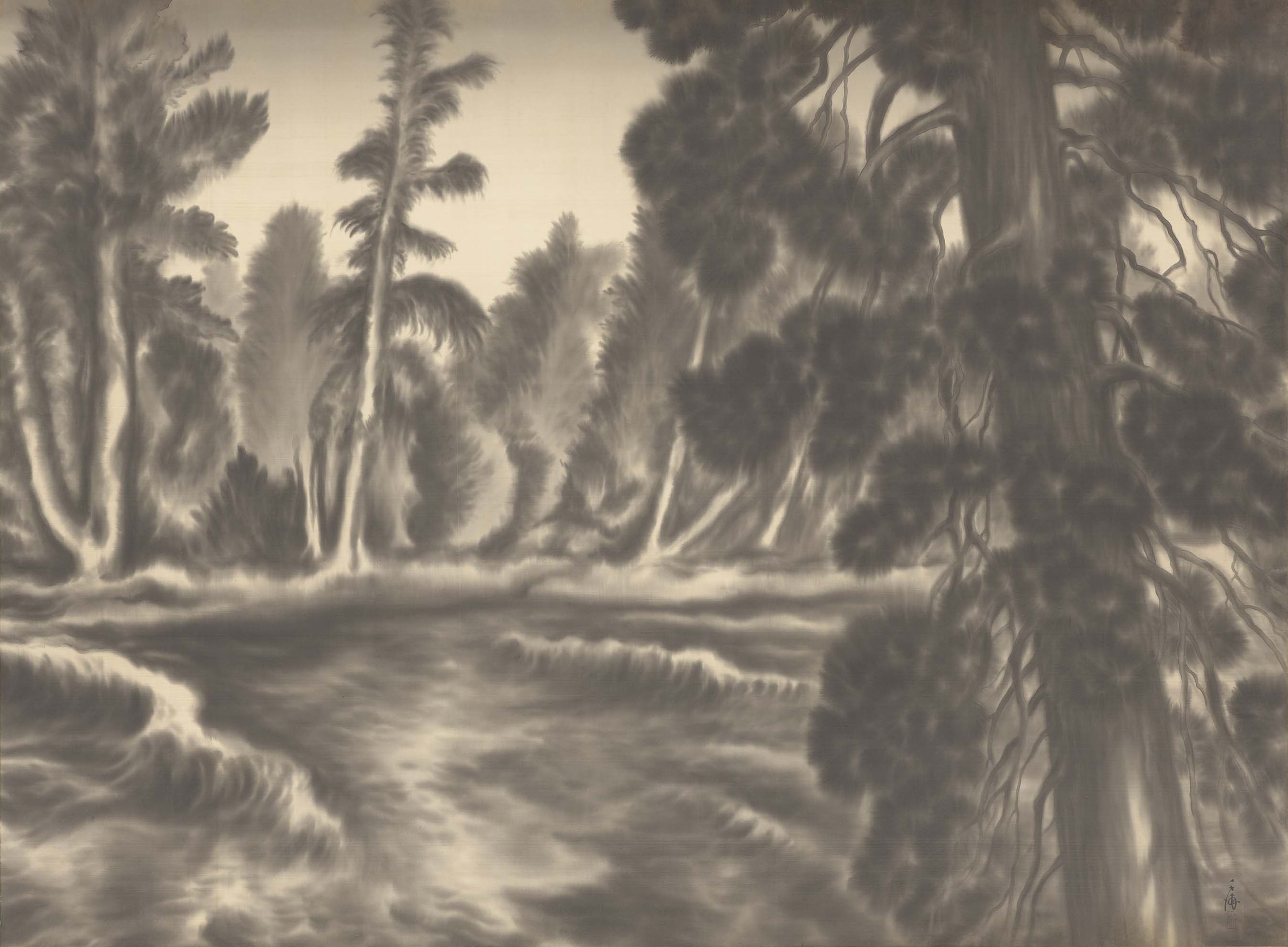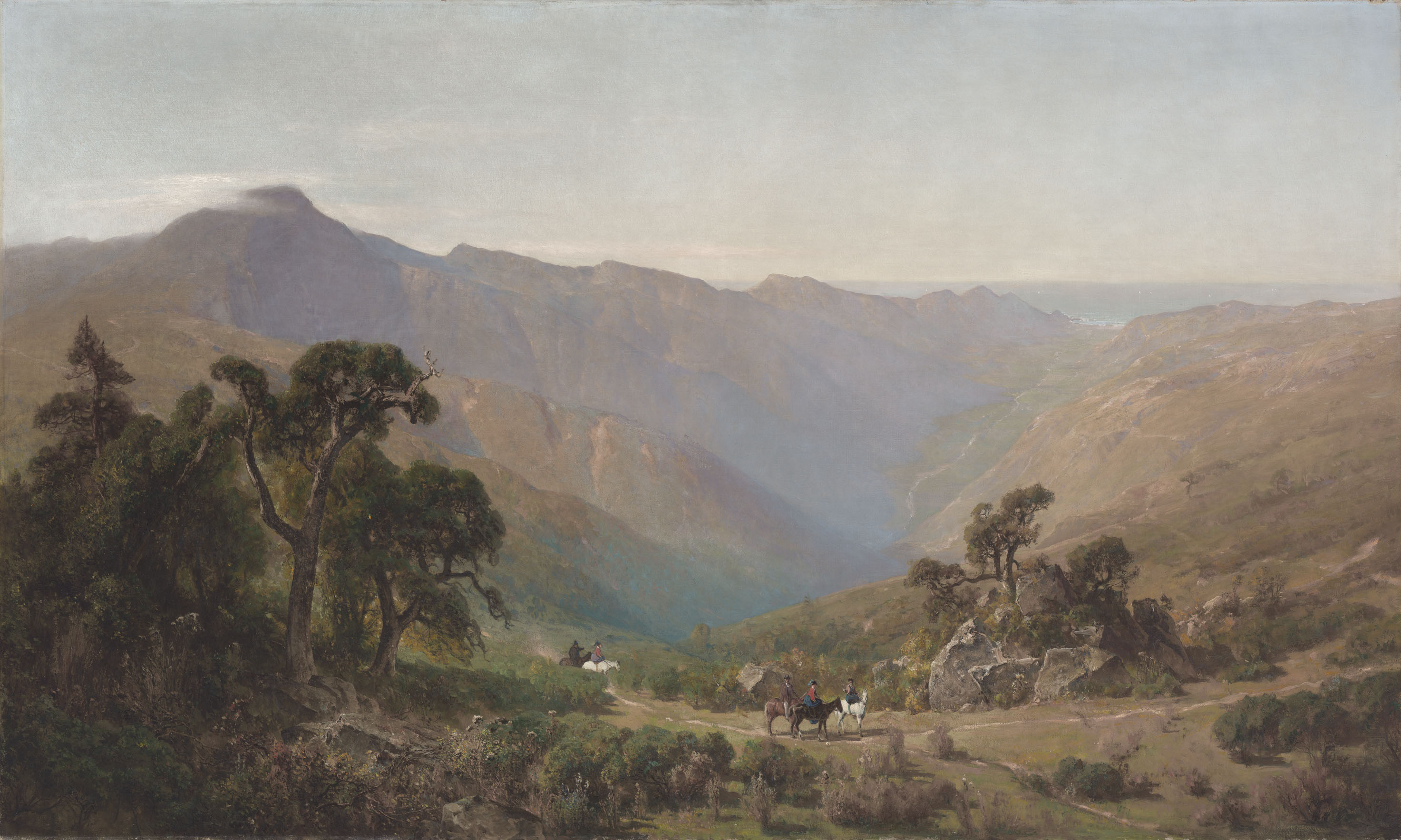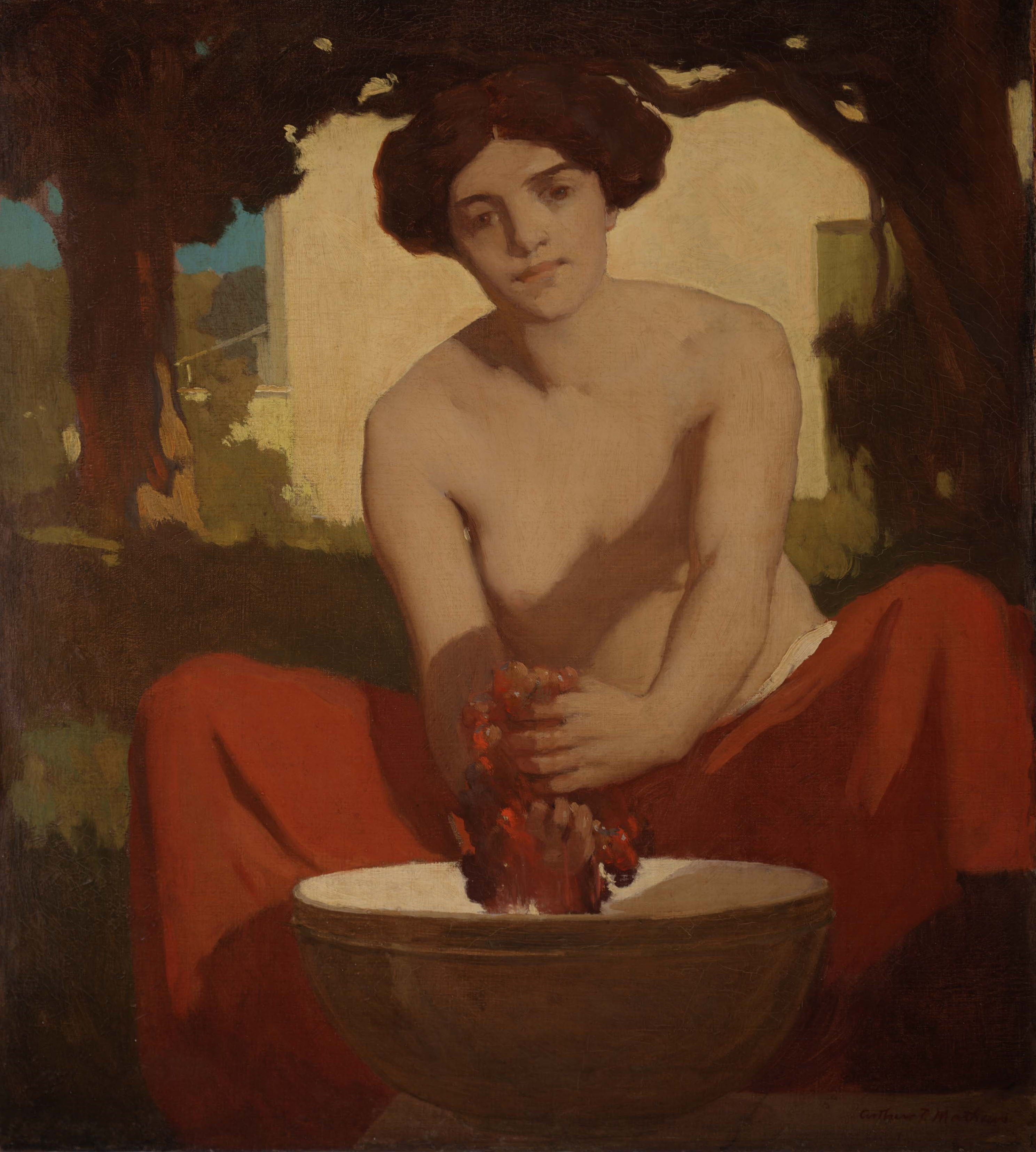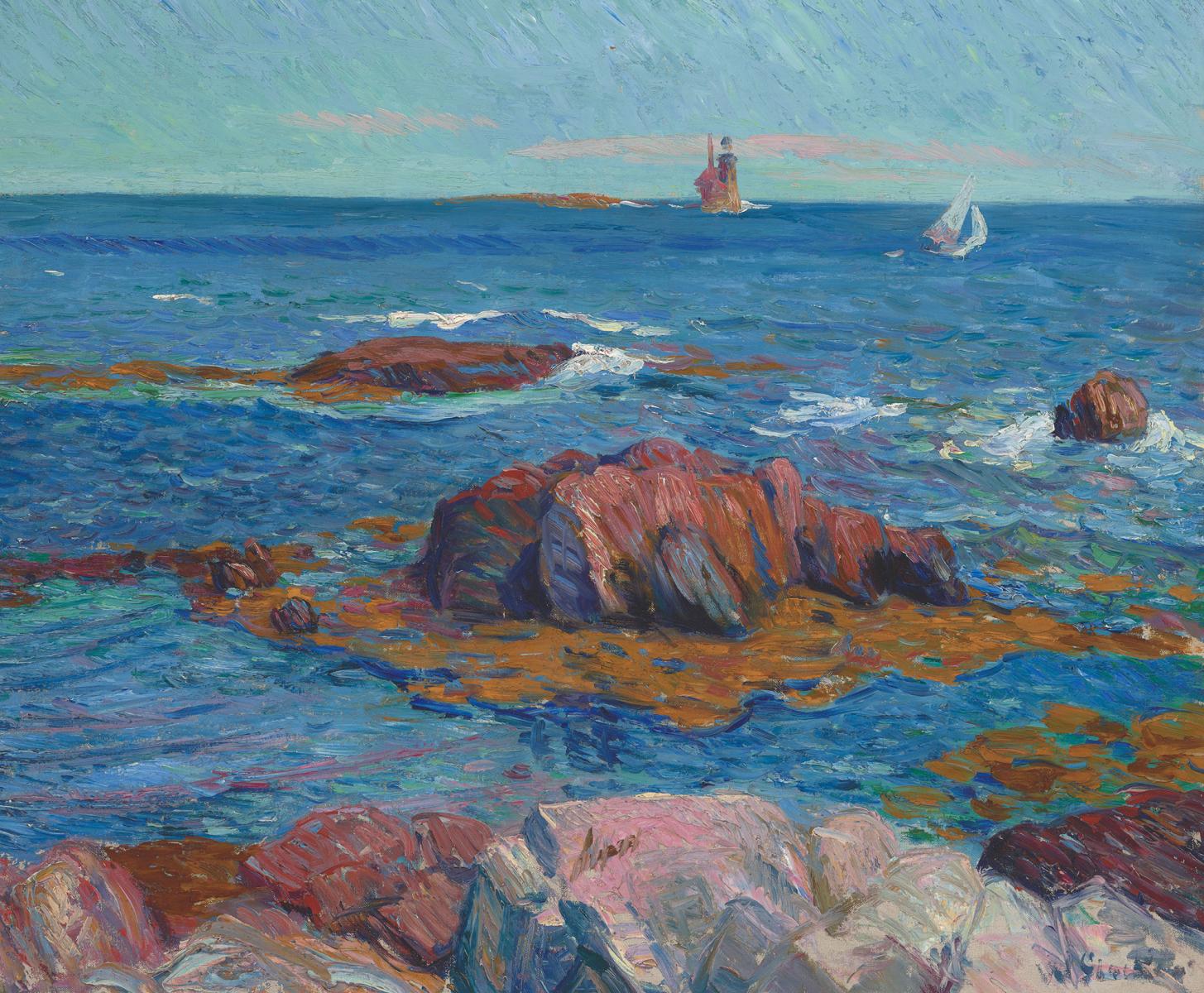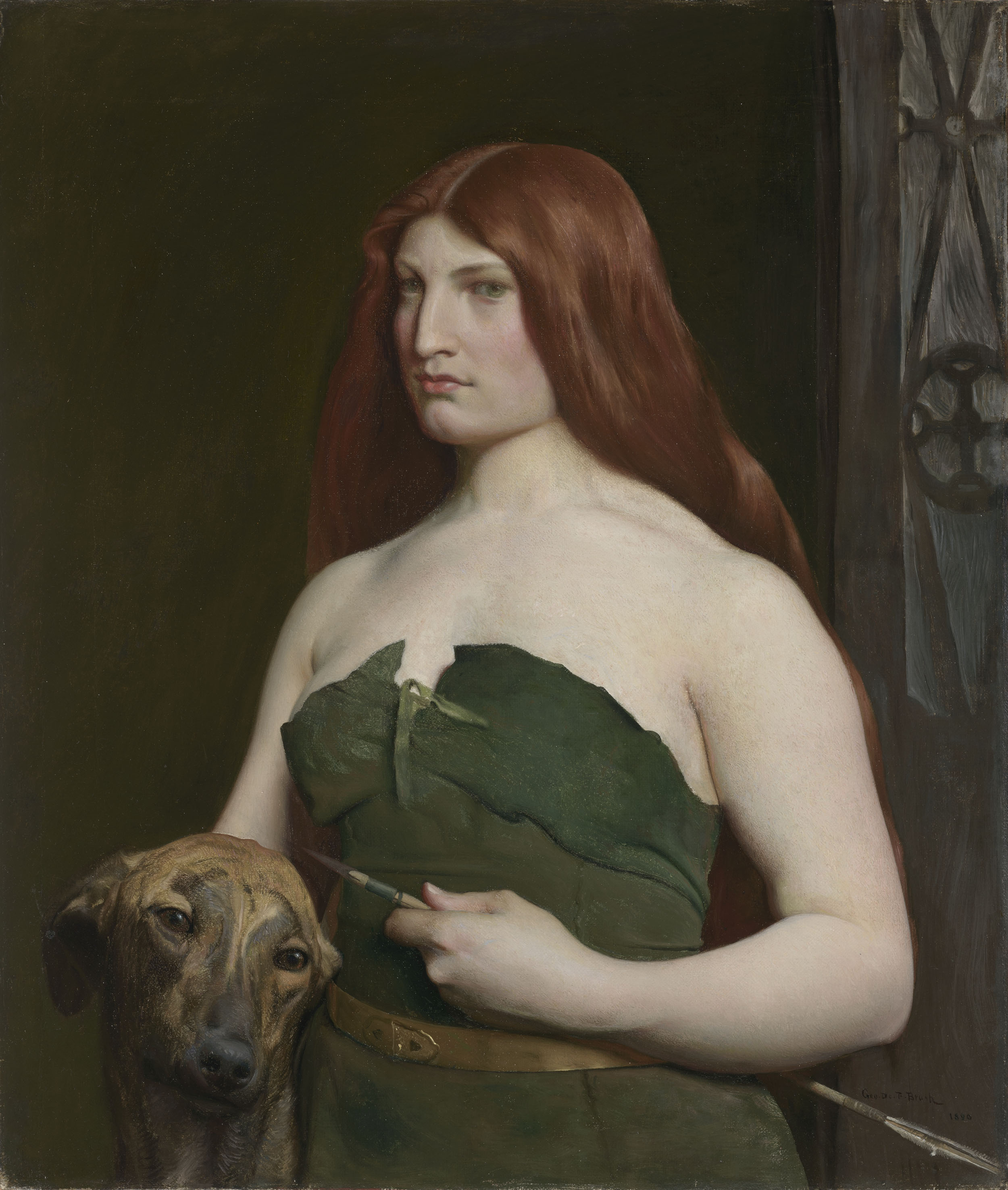Ebba Bohm
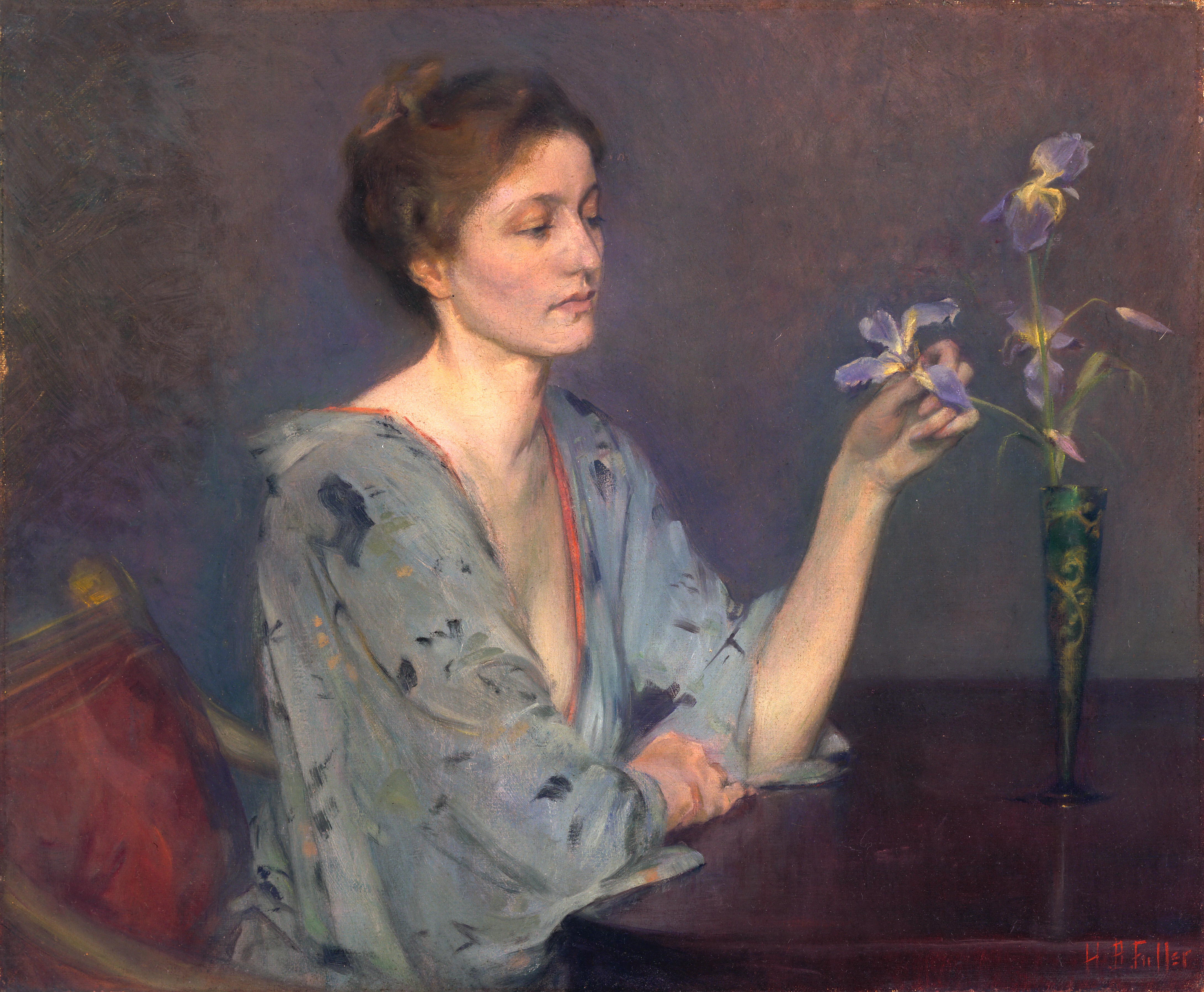
Why do we idealize others?
Fuller was involved with the artists’ colony in Cornish, New Hampshire, a special atmosphere where artists worked together against a backdrop of theater, poetry, and gardening. This portrait shows Ebba Bohm, a Swedish model who lived with the Fuller family in Cornish, as she contemplates a vase of irises, lost in an idealized world of the artist’s making. Her kimono and the vase of flowers allude to Asian aesthetics, which influenced many American painters at the time.
